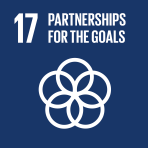Abstract
Indigenous peoples in many regions have a long history of devastation from epidemics brought by colonizers, from the arrival of the first Europeans in the Americas who brought smallpox and influenza to a measles outbreak among the Yanonami of Brazil and Southern Venezuela in the 1950s/60s that nearly decimated the tribe (Pringle, 2015). COVID-19 (coronavirus) presents a new threat to the health and survival of indigenous peoples. Indigenous peoples in nearly all countries fall into the most “vulnerable” health category. They have significantly higher rates of communicable and non-communicable diseases than their non-indigenous counterparts, high mortality rates and lower life expectancies. Contributing factors that increase the potential for high mortality rates caused by COVID-19 in indigenous communities include mal – and under-nutrition, poor access to sanitation, lack of clean water, and inadequate medical services. Additionally, indigenous peoples often experience widespread stigma and discrimination in healthcare settings such as stereotyping and a lack of quality in the care provided, thus compromising standards of care and discouraging them from accessing health care, if and when available.
- 21 mai 2020



